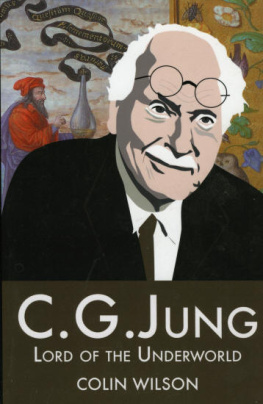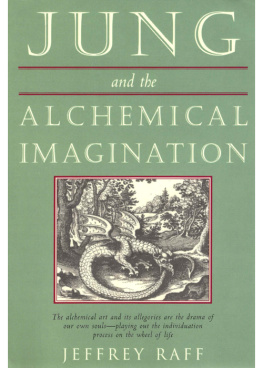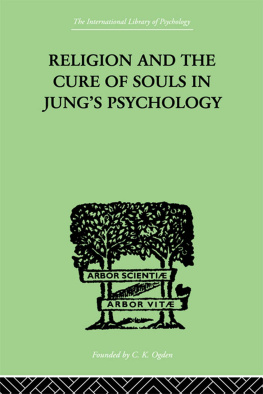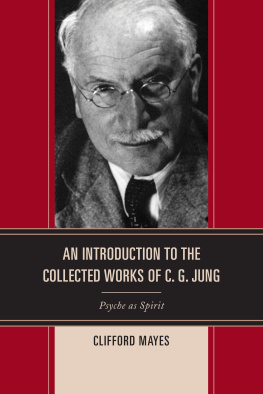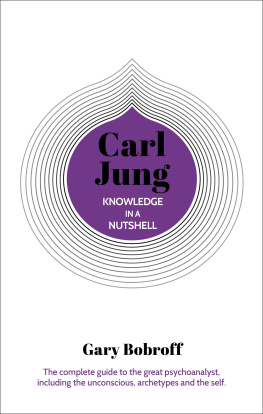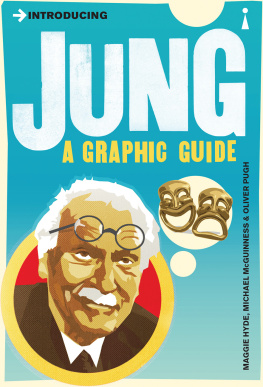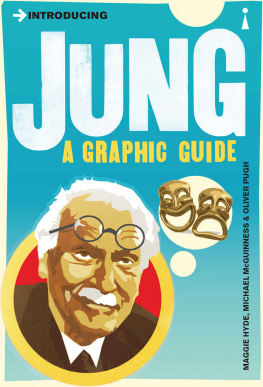Acknowledgements
I wish to thank Messrs Routledge and Kegan Paul for their permission to quote from Jung's Collected Works, and from the other volumes by Jung listed in the bibliography. I also wish to thank Aldus Books for their permission to quote from Jungs Man and His Symbols. I am grateful to Israel Regardie for sending me a copy of Spiegelman's book The Knight. My thanks to my old friend Vincent Brome for permission to quote from his lively biography of Jung.
Appendix
Active Imagination
Active imagination is certainly one of the most interesting and exciting of all Jungs ideas. But those who wish to learn more about it will have a frustrating time searching through the Collected Works; the General Index lists a few dozen references, but most of these turn out to be merely passing mentions. The earliestand perhaps most completedescription of the method occurs in the essay on The Transcendent Function, written in 1916; yet here Jung does not even mention it by name. Moreover, he left the essay in his files until someone asked him for a contribution to a student magazine in 1957. It appears in Volume Eight of the Collected Works, together with a preliminary warning: The method is ... not without its dangers, and should, if possible, not be employed except under expert supervision.
Yet if the method is as effective as Jung claimsin his autobiographythen such a danger should not be taken too seriously. After all, if active imagination really works, then Jung has solved a problem that tormented so many of the outsiders of the nineteenth century, and should have provided mankind with a vital key to its future evolution. In a letter of 1871, Rimbaud wrote about the poets need to induce visions: I say that one must be a visionarythat one must make oneself a VISIONARY. He goes on: The poet makes himself a visionary through a long, immense and reasoned derangement of all the senses. All forms of love, of suffering, of madness, he seeks himself ... And in A Season in Hell, he claims to have succeeded in inducing this derangement: I accustomed myself to simple hallucination: I really saw a mosque in place of a factory, angels practising on drums, coaches on the roads of the sky; a drawing room at the bottom of a lake: monsters, mysteries ...
But when expressed in this form, we can see that it is basically the old romantic craving for wonders, marvels and ecstasies, the craving expressed in the very title of Poes Tales of Mystery and Imagination. We find it in the dim, misty landscapes of Novalis and Tieck, in the grotesqueries of Hoffmann and Jean Paul, in the horrors of Poe and Sheridan Le Fanu, in the courtly daydreams of the Pre-Raphaelites, in Aubrey Beardsleys erotic imagery (and it was Beardsley who outraged readers of the Yellow Book with the image of a grand piano in a field) and in the shock tactics of the surrealists and the Dadaists. It all seems to amount to Yeats attempt to escape the foul rag and bone shop of the heart with a kind of ladder of wishful thinking. Clearly, if Jung had really created a usable technique for making oneself a visionary and seeing angels practising on drums and drawing rooms at the bottom of a lake, then this alone would qualify him as one of the most significant figures of our century.
It was in the autobiography that Jung made clear for the first time how he came to recognize the existence of active imagination: how the break with Freud brought him to the verge of total nervous collapse, and so allowed him a glimpse of the delusions suffered by psychotic patients. It was fortunate for Jung that the vision of Europe drowned in blood came true in the following year, bringing the recognition that an illusion is not necessarily untrue. I see too deep and too much says the Outsider hero of Barbusses LEnfer, and this was precisely what was happening to Jung.
When the mind is under this kind of severe stress, its natural tendency is to put up frantic resistance. Jung recognized that he was in the same position as Nietzsche and Hlderlin, and that, like them, he might lose his sanity; the result was a grim determination not to let go. Then, in December 1913, sitting at his desk in a state of turmoil and pessimism, he made the momentous decision to let go and see what happened. The result was not total breakdown: it was the astonished recognition that the force that had been trying to make him let go was a stranger inside his own head, and that the stranger was in perfect control of the situation. It was a blinding recognition of the hidden ally. In Hudsons terms, what was happening was that the subjective mind was saying to the objective mind: Look, for heavens sake stop struggling to maintain this iron curtain between us, because youre wasting your strength in fighting yourself. It could be compared to a wife saying to her husband, who is exhausted by driving: Get in the back and have a nap while I drive. Jung was sensible enough to let go of the steering wheel, and the result was the waking dream of the cave with the corpse of Siegfried.
In a book called Access to Inner Worlds I have described how a similar experience happened to an American living in Finland, Brad Absetz. After the death of their child through cancer, his wife collapsed into severe depression. She used to lie on a bed for hours, plunged in negative fantasies and self-reproaches; Brad Absetz lay beside her, waiting for her to emerge, so he could be there to help her. He lay in a state of vigilance, waiting for the slightest indication that she was coming round; at the same time, he was physically relaxed. One day, as he lay there, he experienced an overwhelming sense of lightness and relief, almost as if he were floating up off the bed. This was his own equivalent of Jungs letting go. And what now happened was that that other person inside his head began to express itself. As he stood by the buffet table, waiting to help himself to lunch, his arm began to twitch; he recognized this as a signal that it wanted to do something, and allowed it to reach out and take whatever food it liked. It took food that he would not normally have taken. This continued for weeks, and in a short time, he had lost weight, and felt healthier than ever before. One day his small daughter asked him to make her a drawing with coloured crayons; again, the hand began to twitch, and he allowed it to do what it liked. The result was an astonishing series of drawings and paintings, incredible psychedelic patterns, every one totally different from all the others. His other self took over and wrote poetry, while he merely looked on; it made metal sculptures; it performed his everyday taskslike bee-keepingin a simple, ritualistic manner that renewed his vitality. In the parliament of Brads mind, the Member for the Unconscious had been given his proper say, and the result was a life that was in every way more harmonious and relaxed. He had, to a large extent, achieved individuation.
Brad Absetz was in no danger of insanity when he let go, but he was under severe stress. His subjective mind, left to its own devices, showed him the way out of the impasse. (The methodof lying totally relaxed, but in a state of wide-awake vigilancecould be regarded as the simplest and most effective of all mental therapies.)
In 1913, Jung was in a rather worse state; so when he let go, the image-making powers of the subjective mind flooded into consciousness. He called the result active imagination, but we can see that it was not imagination in the ordinary sense of the word: the deliberate evocation of mental images or states. What Jung had achieved was a new balance between the ego and the unconscious, in which the unconscious was recognized as an equal partner. This explains why, from then on, Jung frequently had visions, like the one of the crucified Christ at the end of his bed.

